Kingfishers and Kookaburras! Vibrant in color, conspicuous in activity and often hilariously raucous, these are some of the most well-known and much loved birds in Australia! Kingfishers and kookaburras are a versatile group. Their colours range across the spectrum. They have adapted to rivers and deserts, to wet rainforests and dry woodlands, to mangrove swamps and islands. They catch lizards, snakes and spiders on the ground, dive underwater for fish, snatch frogs in the tree canopy, and take insects in full flight. — Online review notes of ‘Kingfishers and kookaburras: Jewels of the Australian Bush’, by David Hollands.
There are ten species of kingfisher in Australia. I’ve only seen a few of them, but recently laid eyes on a personal new species — the Red-Backed kingfisher (Todiramphus pyrrhopygia) on the Darling Downs.
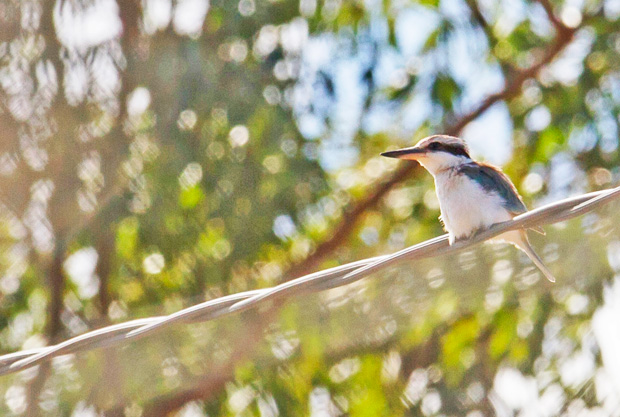
Red-backed Kingfisher (Todiramphus pyrrhopygia), Mount Tyson, Darling Downs. Thanks to spotter extraordinaire Rod Hobson. Photo R. Ashdown.
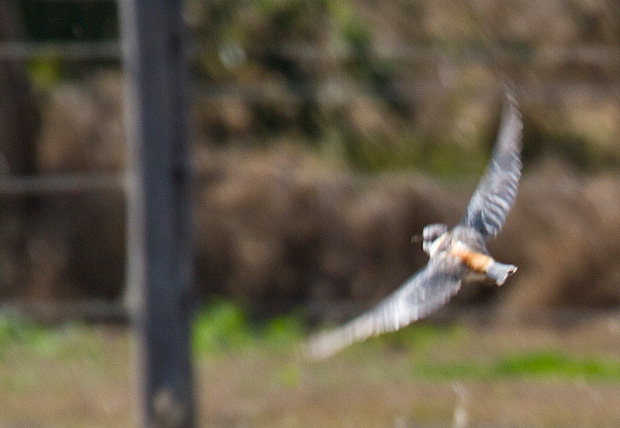
Red back of the Red-backed Kingfisher. These kingfishers inhabit the dry, inland regions of Australia, usually desert, mulga and mallee country. A nomadic species, in dry winter months they may migrate northward or towards the west and north-eastern coast. Photo R. Ashdown.
Whether or not I’ve a camera in hand, it is always a thrill to watch kingfishers. The fleeting, dazzling blue of an azure kingfisher darting across a dark, quiet creek or a muddy mangrove bank seems to me to be like the last piece of a scene’s jigsaw falling into place.
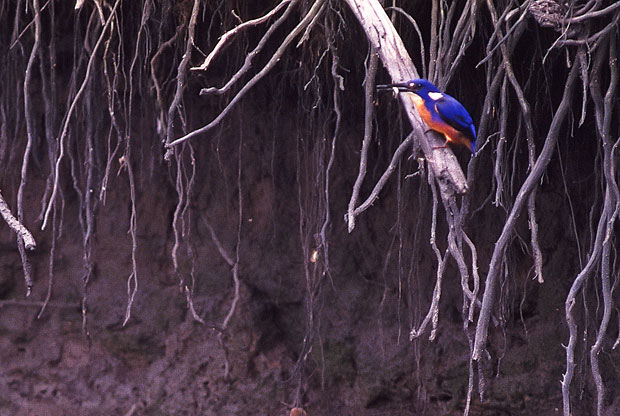
Azure Kingfisher (Alcedo pusilla), Tingalpa Creek. Australia’s smallest kingfisher, with a bill that takes up more than a quarter of its 19cm body length. Photo R. Ashdown.
I’ve always found these birds difficult to photograph. The best results, as is always the case, come with knowing your subject, having incredible patience, and often using a hide and having a big bit of glass stuck to your camera. I haven’t used any of these when it comes to kingfishers – I’ve always ended up in a muddle just snapping away, usually with fairly ordinary results. I did discover that you can get fairly close to kingfishers by using a canoe to sneak up on them – that’s how I took these images of an Azure Kingfisher (above) and a Collared Kingfisher (below) on Tingalpa Creek, where Brisbane’s outskirts meet Redland Bay.
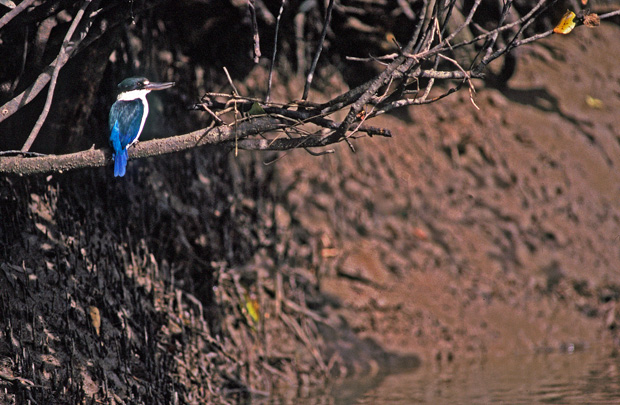
Collared Kingfisher (Todiramphus sanctus), Tingalpa Creek. Sometimes referred to as the Mangrove Kingfisher, this bird lives in the mangroves of Australia’s northern coasts. It eats insects, reptiles and aquatic animals such as worms, which it picks off the mudflats. Photo R. Ashdown.
Through patience and persistence, Mike Peisley has captured taken some excellent images of sacred kingfishers in his local patch of scrub in Brisbane.
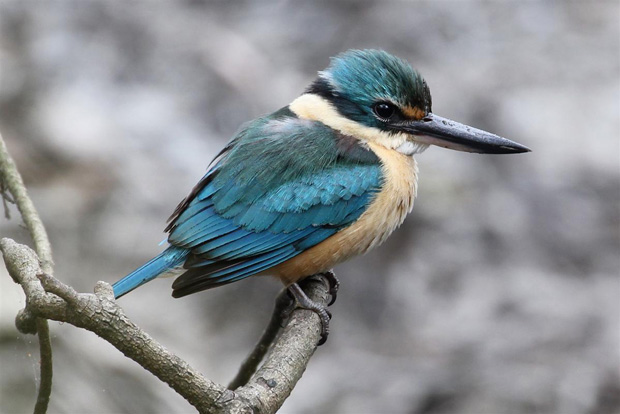
Sacred Kingfisher (Todiramphus sanctus). This is the most familiar, and widespread, of the Australian kingfishers. It spends its day watching for insects and lizards in the leaf litter, but sometimes dives into brackish water for fish or yabbies. This species is found all over Australia, except in the densest rainforests and inland deserts. Photo M. Peisley.
Finally, here are some more images of these adaptable and exquisite birds using any available perch.
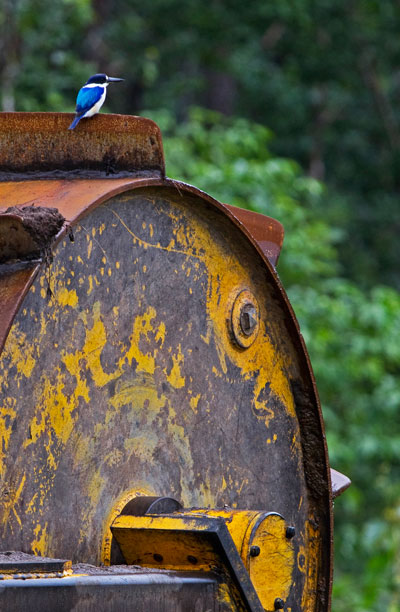
Forest Kingfisher (Todiramphus macleayii), northern Queensland. A bird with royal blue wings, the Forest Kingfisher is a bird of open woodlands, swamps, mangroves and gardens. Photo R. Ashdown.
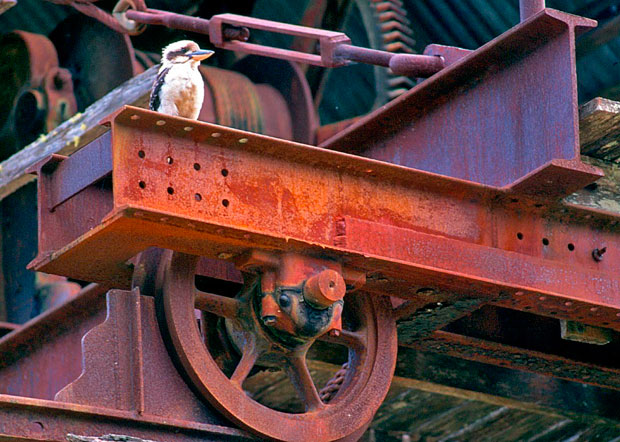
Laughing Kookaburra (Dacelo novaeguineae), Bellthorpe State Forest. A common visitor to Australian gardens, this large kingfisher of the southern and eastern states has been introduced and established in Western Australia, Tasmania and New Zealand. Photo R. Ashdown.
Challenging and enchanting subjects indeed. For anyone seeking a complete immersion in the magical world of Australian kingfishers, track down a copy of the book mentioned at the start of this post: Kingfishers and Kookaburras: Jewels of the Australian Bush, by David Hollands, is a book that truly captures the magic of these birds in all their variety.

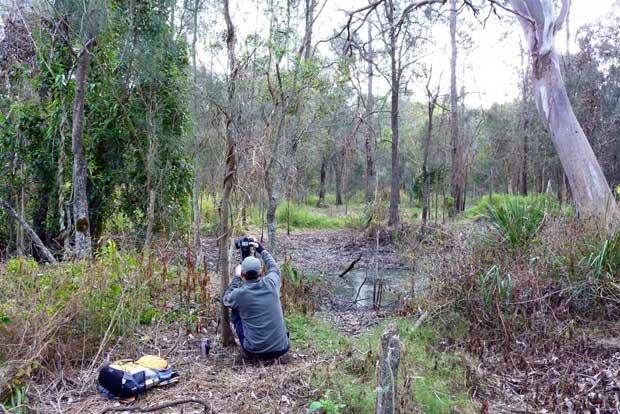
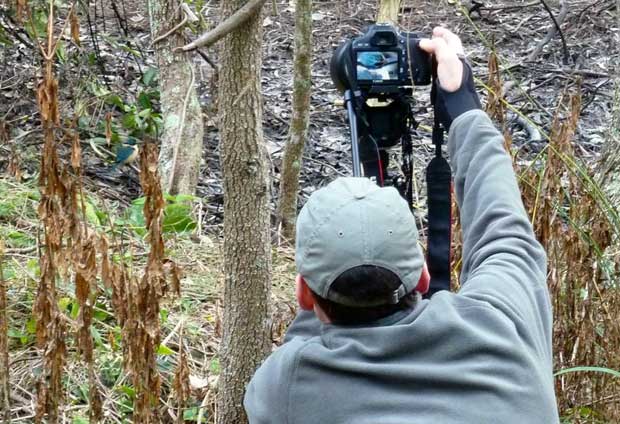
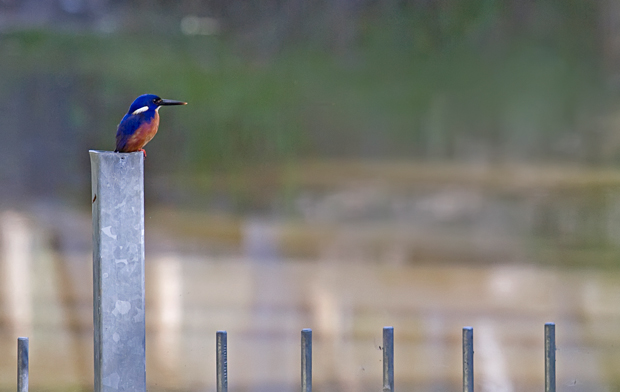

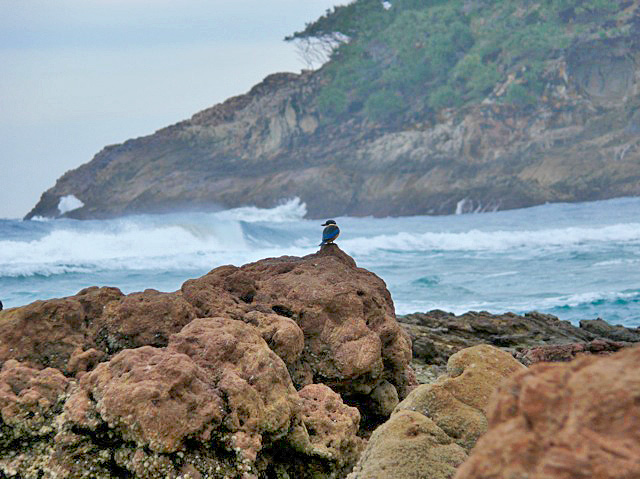
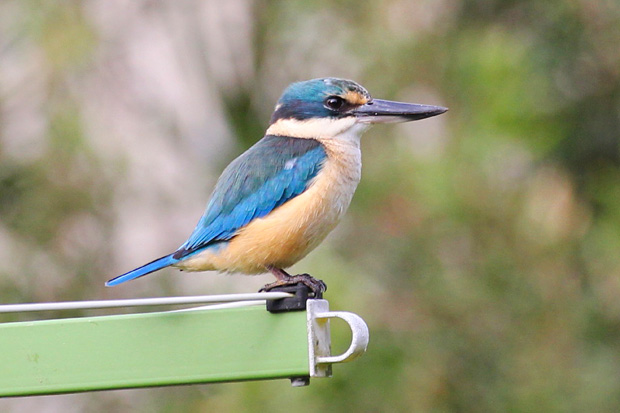
Great new blogs Robert, fabulous shots by Mike.
Wonderful post Rob. They are true beauties. I'd love to track down David Holland's book. Have two others of his and love them.
One of my favourite birds. I haven’t seen one in the wild since I lived in Mackay in the 60’s. Where have all the Kingfishers gone? I think we know the answer….
Fantastic Post! Great Photos!! We only see the Sacred Kingfisher at our Patch, and they nest in the same Termite Nests every year. Recently saw the Azure at Texas over Easter.